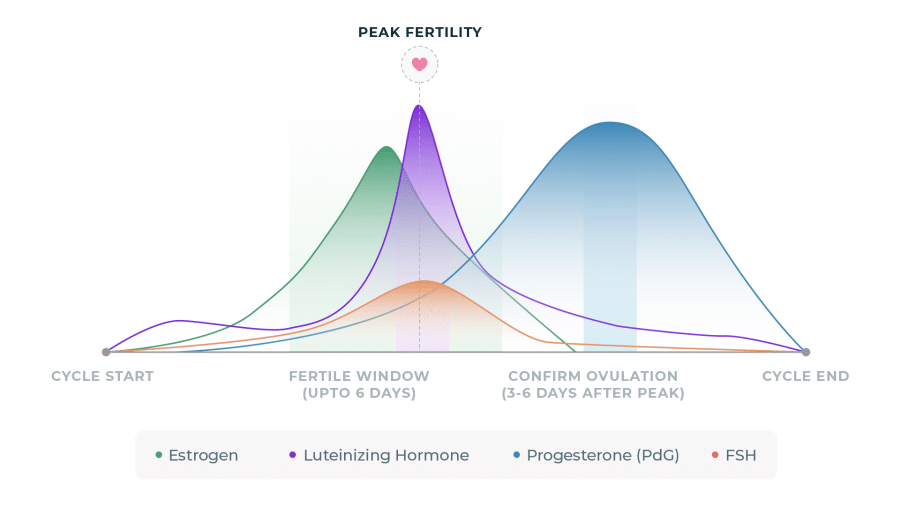Estrogen, Luteinizing Hormone (LH), Follicle Stimulating Hormone (FSH), and Progesterone are fertility hormones that play a pivotal role in ovulation, fertilization, implantation, and finally nourishing a fetus from day 0.
While there are several ovulation kits and fertility monitors that predict your fertile window, very few can tell if you are actually ovulating. Track your hormone accuracy with Inito.
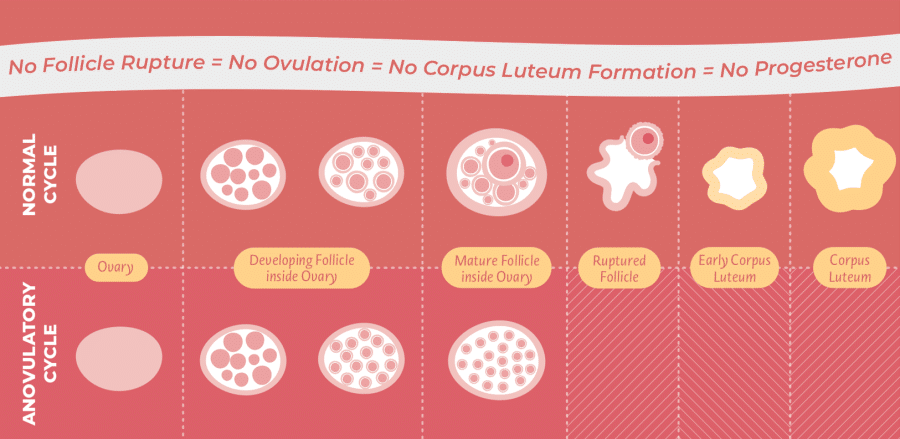
The most accurate indicator of ovulation is progesterone which is a steroid hormone secreted by both the adrenal cortex as well as ovaries and testes. After the egg is released, progesterone levels start rising steadily which confirms ovulation.
But apart from meeting your fertility goals, the right kind of hormone tracker can also help manage your overall health by tracking daily in conditions like Polycystic Ovary Syndrome (PCOS). Keeping an eye on your hormone levels can help you make the right choices, especially in terms of lifestyle and diet.
We tried, tested, and read hundreds of reviews on the internet to shortlist the most effective hormone trackers that are worth your time, money, and effort.
Read this article to learn the importance of tracking your hormones and what you should look out for while choosing the right fertility tracker.
Should be able to track all fertility hormones
![]()
Ovulation kits are undoubtedly the cheapest fertility devices in the market but they are not designed to confirm your ovulation day. Fertility monitors go the extra mile and track multiple hormones like LH, FSH, and Estrogen but very few also track the hormone that is responsible for confirming your ovulation.
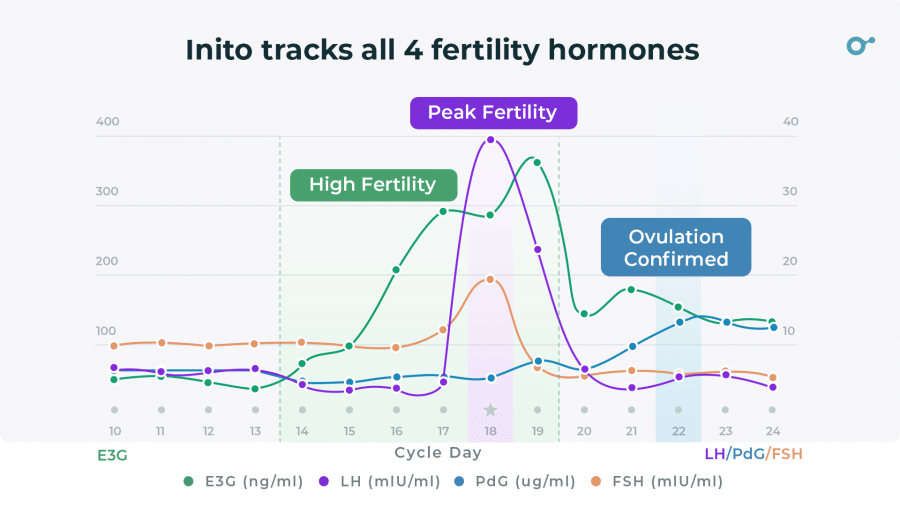
The Inito fertility monitor is a reliable hormone tracker which measures hormones like progesterone (PdG) as well as Estrogen, LH, and FSH to give a 360-degree view of your reproductive health.
Unlike other hormone trackers that measure progesterone, Inito is able to track all of your fertility hormones on a single strip in the least amount of time. This is a huge plus because testing with more than one strip can be very tricky if you step out for work during the day.
Users who have settled for other hormone trackers have complained that carrying around the testing kit is cumbersome throughout the day. Due to this, users shared how they fell out of the habit of testing regularly and eventually had to invest in other devices.
If you are unsure about your ovulation even after confirmed results, you can also use BBT monitors like Tempdrop to cross-check.
Inito’s fertility monitor however rules out the need for cross-checking results because it shows numbers and graphical representations. If you notice any kind of hormonal imbalance, you can correlate your Inito results medically and get blood tests for further investigations.
Reads different kinds of LH surges
The science behind ovulation kits is simple. It measures your Luteinizing Hormone (LH) which peaks around the time of ovulation and shows two days out of your six-day fertile window.
The catch here is that your LH can peak more than once in a regular cycle. It’s a rather usual phenomenon but the problem is that every LH peak does not signify ovulation. So unless your fertility device is tracking your hormone values and is designed to monitor progesterone, you will never know for sure if you actually ovulated.
So once you have finally decided upon a fertility device that fulfills this basic criterion, don’t be surprised to find multiple LH peaks in your cycles like this. If you look closely at this hormone chart, Inito confirmed ovulation only after the second LH peak when progesterone started rising slightly.
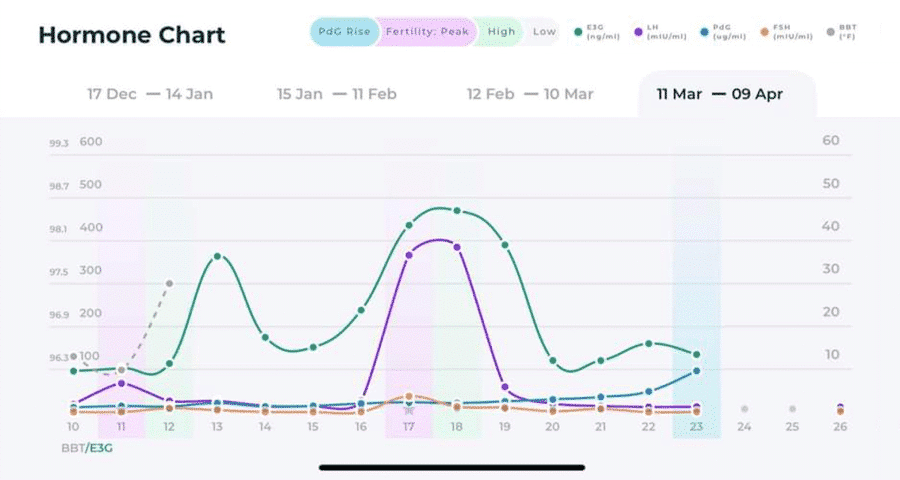
The other great thing about Inito is that it does not have a limiting hormone threshold which ovulation kits (OPKs) do. Most OPKs can read only up to a certain value of your hormone surge based on these average thresholds. This is also the case with other fertility monitors as their hormone thresholds are either too high or too low.
Higher thresholds on these tests lead to missed ovulation and fertile window predictions if your LH surge is too low.
Reads Beta LH instead of Alpha LH
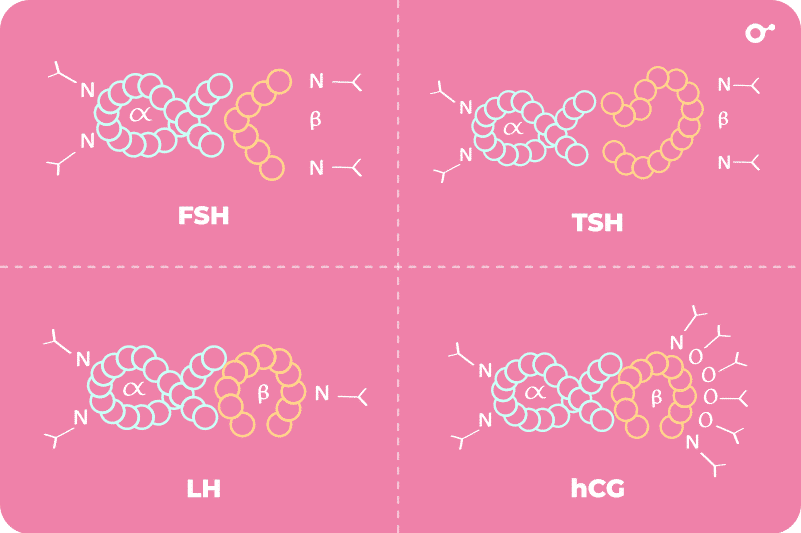 Almost every fertility device like ovulation kits and fertility monitors measures alpha LH as the most reliable indicator of ovulation. This, however, increases your chances of getting false results. Most hormones have an alpha and a beta component to their structure.
Almost every fertility device like ovulation kits and fertility monitors measures alpha LH as the most reliable indicator of ovulation. This, however, increases your chances of getting false results. Most hormones have an alpha and a beta component to their structure.
The alpha subunit of hormones like LH, FSH, human chorionic gonadotropin (hCG), and thyroid stimulating hormone (TSH) are similar in structure.
When an OPK tests for alpha LH, it can mistake the alpha component of the other hormones and misread your results.
Beta LH, on the other hand, is a far more reliable indicator as it doesn’t cross-react with other hormones and this minimizes the chances of false results.
The Inito fertility monitor reads beta LH instead of alpha LH so it can be trusted for reliable results.
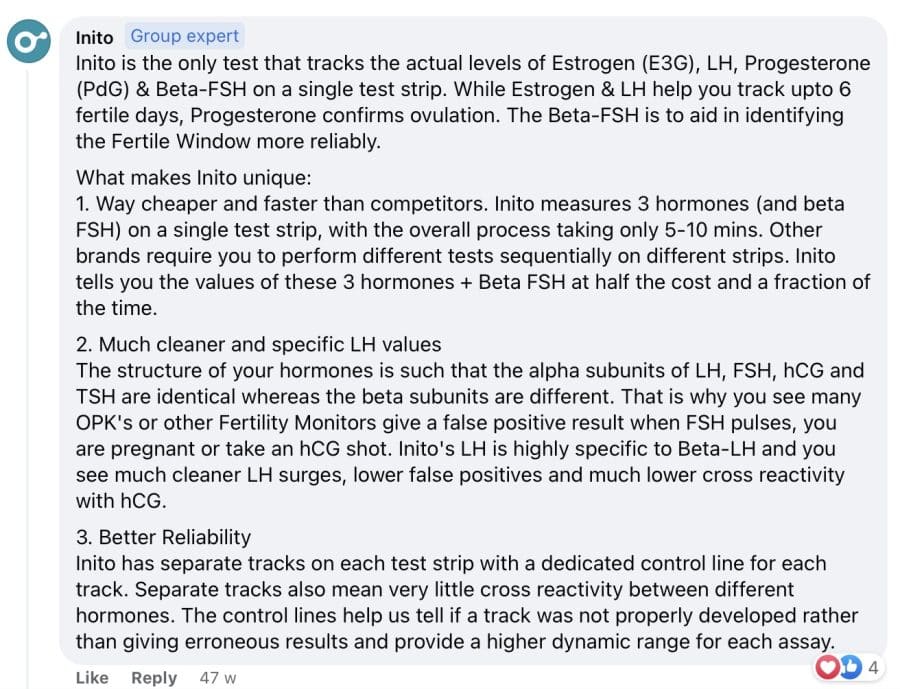
Adapts to chronic conditions like PCOS
Irregular cycles make it a lot harder to confirm ovulation. Hormone fluctuations can push your ovulation by several days, prepone it, or even cause anovulatory cycles.
Conditions like Polycystic Ovary Syndrome (PCOS) lead to irregular cycles due to varying levels of LH, FSH, and estrogen. This is why ovulation kits or fertility monitors that don’t give you visibility of hormone levels/values are out of the equation if you have PCOS or anovulatory cycles.
Fertility monitors like Inito are programmed to study past cycle trends and base hormone levels. While other devices follow a set template and misread data that falls out of the ‘normal range’, Inito is able to provide customized results based on your past cycle trends and health conditions.
Tracking your hormones regularly can also help you manage and treat conditions like PCOS and anovulation. By monitoring your daily levels, you can find out if dietary changes, weight loss, or prescription medicines are making any significant changes to your hormone trends.
However, it is important to note that hormone changes after dietary/lifestyle changes can take a few months to show visible signs of change.
Guides you to test on the right days
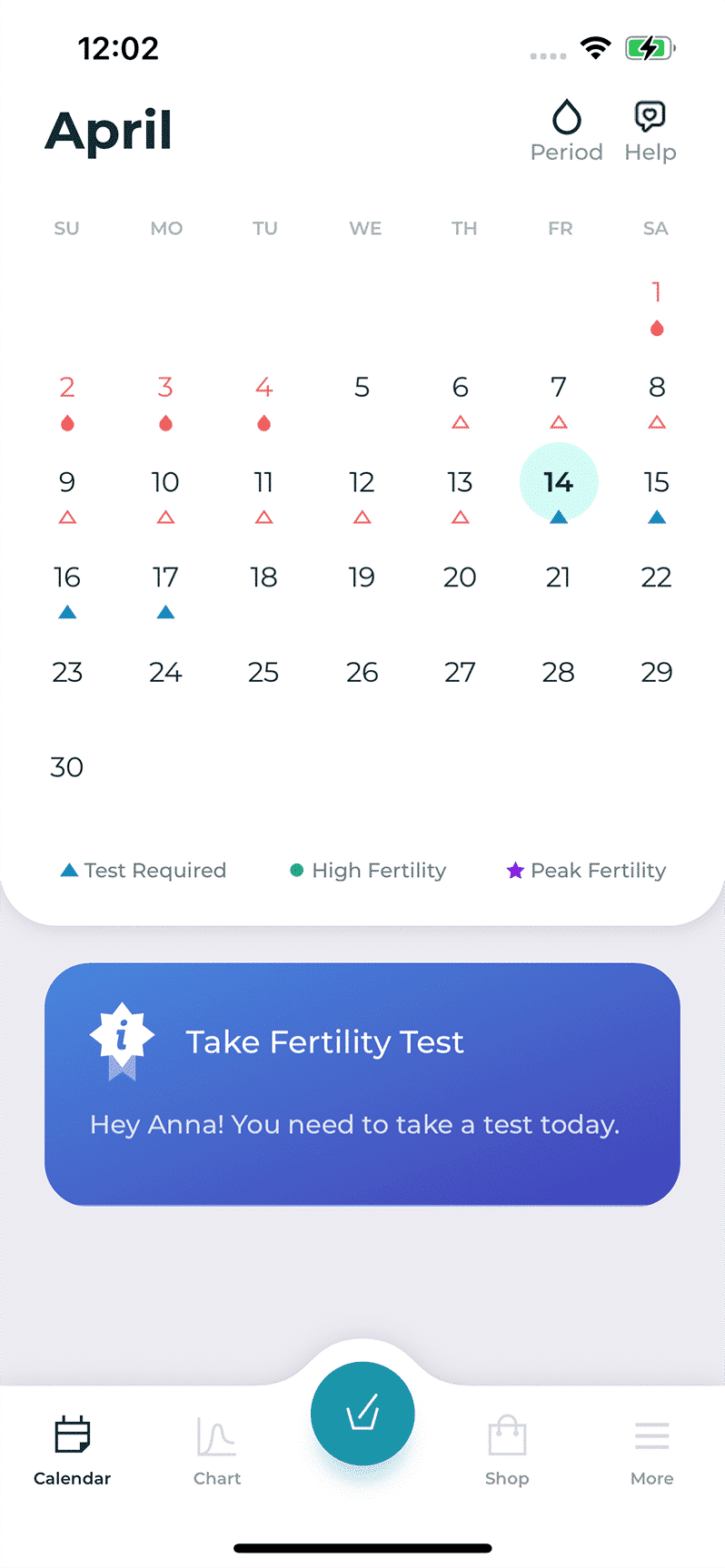
A smart app that understands your body, menstrual cycle, and hormone trends and tells you to test on the right days – makes all the difference. At the same time, if you are required to test throughout your cycle, you might end up investing in multiple test strips and lose out on money.
While ovulation strips are affordable, they are out of the equation if you want to confirm your ovulation dates. We compared a few fertility monitors and evaluated them on the basis of test predictions, notifications, test insights, and medical tips.
Both Inito and its contemporary, which is a similar-looking round-shaped fertility monitor, did fairly well on all of these parameters. But in terms of providing test insights and accuracy of test predictions, we would rate Inito fairly higher on the scale.
To confirm ovulation, we were asked to test on 12 days which required only one pack of strips which was included in their starter pack. Inito guided us from cycle day 6 to the last day of the fertile window with useful data and expert tips.
The notifications led us to consume content in their blogs and social media platforms like Instagram which had lots of medical content you can refer to if you are trying to conceive.
Wrapping up
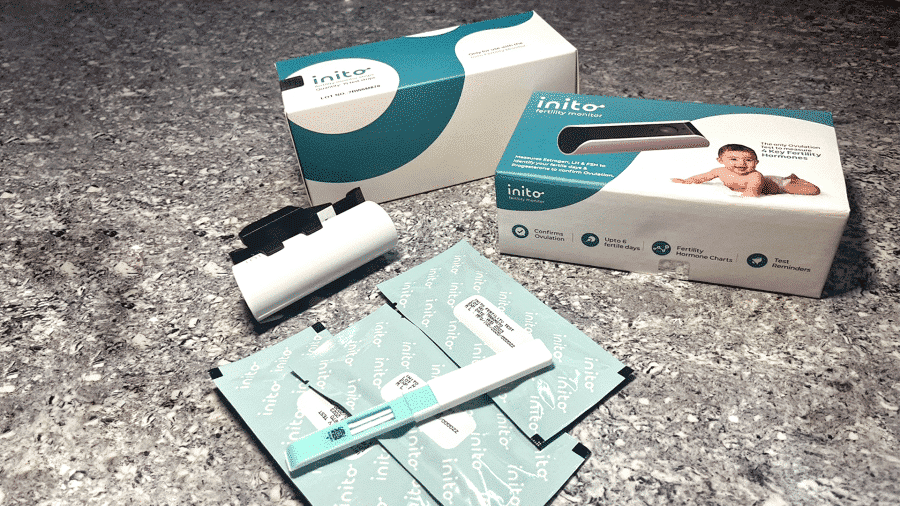
The benefits of hormone tracking surpasses that of simply confirming your fertile days. It can help you understand your hormone levels in conditions like PCOS, anovulatory cycles, and irregular cycles.
If you want accurate hormone values to help you conceive, make sure that you pick a fertility monitor that doesn’t conform to a lower threshold, reads all hormones including progesterone, and tells you when to test.
This way you can be sure of your ovulation results and save money by investing in one more device that does the deed.


